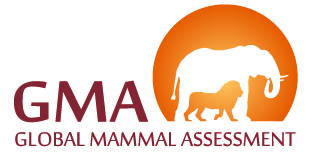Carlo Rondinini & Piero Visconti
Distributions and populations of large mammals are declining globally, leading to an increase in their extinction risk. We forecasted the distribution of extant European large mammals (17 carnivores and 10 ungulates) based on 2 Rio+20 scenarios of socioeconomic development: business as usual and reduced impact through changes in human consumption of natural resources. These scenarios are linked to scenarios of land-use change and climate change through the spatial allocation of land conversion up to 2050. We used a hierarchical framework to forecast the extent and distribution of mammal habitat based on species’ habitat preferences (as described in the International Union for Conservation of Nature Red List database) within a suitable climatic space fitted to the species’ current geographic range. We analyzed the geographic and taxonomic variation of habitat loss for large mammals and the potential effect of the reduced impact policy on loss mitigation. Averaging across scenarios, European large mammals were predicted to lose 10% of their habitat by 2050 (25% in the worst-case scenario). Predicted loss was much higher for species in northwestern Europe, where habitat is expected to be lost due to climate and land-use change. Change in human consumption patterns was predicted to substantially improve the conservation of habitat for European large mammals, but not enough to reduce extinction risk if species cannot adapt locally to climate change or disperse.

Richness of European large mammals and geometric mean change of the extent of habitat (d-ESH%) between 2000 and 2050: (a, b). business-as-usual scenario (a) without dispersal and (b) with maximum dispersal and (c, d) change-in-human- consumption scenario (c) without dispersal, and (d) with maximum dispersal (white, regions with <5 species that were excluded from the analyses). Climate adaptation scenario not shown.

You must be logged in to post a comment.